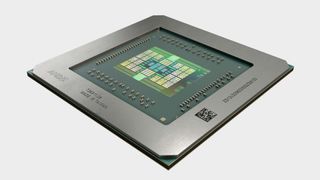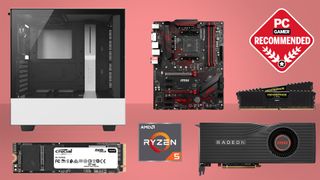AMD is increasing chip supply for Big Navi and Zen 3, but Su says '7nm is tight'
"I've said it before, and I'll say it again, 7nm is tight," says Dr. Lisa Su.

There is one constant surrounding every piece of new hardware that gets released; there is never enough initial supply to satisfy demand. Whether it's the new Intel Comet Lake CPUs, Nvidia graphics cards, or anything coming out of AMD's processor or GPU skunkworks, supply at the start of a new generation of products is always tight.
You spend months voraciously devouring every leak, rumour, and speculation piece about a new slice of gaming silicon, only to be faced with 'out of stock' messages on every retailer page as soon as it's launched.
And that seems to be especially true when it comes to products based on TSMC's in-demand 7nm production process. There are many benefits for a company, such as AMD, to go fabless. It means it can focus development resources purely on design rather than on process node manufacturing as well, and by contracting out production you are more shielded from potential issues as there may be alternative facilities to switch to.
The flip side is that if you're partnering with TSMC on its most advanced node then you're going to be competing with a lot of other high-tech companies chasing the very latest hardware production. And that can mean capacity gets tight.
"I've said before, and I'll say again, 7nm is tight," said AMD CEO, Dr. Lisa Su, in the company's latest financial briefing, "and we continue to partner closely with TSMC to ensure that we can satisfy our customer demand."
For AMD, that means increasing manufacturing capacity with TSMC. With Huawei being given the boot, after the US tightened restrictions on imports, there has been some extra space available and AMD has moved to fill the gap in anticipation of increasing demand.
"Demand has gone up from our initial expectations," says Dr. Su, "and some of that is due to the market and some of that is due to the strength of our product traction."
PC Gamer Newsletter
Sign up to get the best content of the week, and great gaming deals, as picked by the editors.
With both the AMD RDNA 2 and Zen 3/Ryzen 4000 CPUs coming late this year—as Dr. Su once again reaffirmed during the call—there is likely to be a whole lot of product traction when it comes to the 7nm node that both graphics card and processor will have at their hearts.
But while AMD is indeed increasing manufacturing capacity with its Taiwanese partner, the popular CEO still felt it important to reiterate that 7nm supply will still be tight.

Best CPU for gaming: the top chips from Intel and AMD
Best graphics card: your perfect pixel-pusher awaits
Best SSD for gaming: get into the game ahead of the rest
"We are increasing capacity to meet those needs," she says, "but it is tight and I would say that as we continue to increase capacity, we see opportunity there. So from that standpoint demand is strong."
To me that sounds as though AMD would still like a little more manufacturing capacity from TSMC as it's confident there is the demand there to satisfy any extra increase in supply that it can create. And given how much hype there is around the upcoming Big Navi graphics cards, and the support that AMD's previous generations of Ryzen CPUs have had, I can see a near future where everything the red team can ship will get sold.
So yeah, as Dr. Su said, and she'll say it again, 7nm is tight, and so might supply in the channel be late on this year.

Dave has been gaming since the days of Zaxxon and Lady Bug on the Colecovision, and code books for the Commodore Vic 20 (Death Race 2000!). He built his first gaming PC at the tender age of 16, and finally finished bug-fixing the Cyrix-based system around a year later. When he dropped it out of the window. He first started writing for Official PlayStation Magazine and Xbox World many decades ago, then moved onto PC Format full-time, then PC Gamer, TechRadar, and T3 among others. Now he's back, writing about the nightmarish graphics card market, CPUs with more cores than sense, gaming laptops hotter than the sun, and SSDs more capacious than a Cybertruck.
Most Popular




